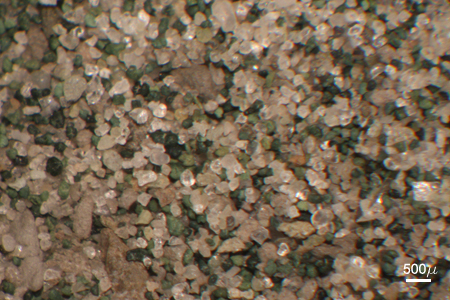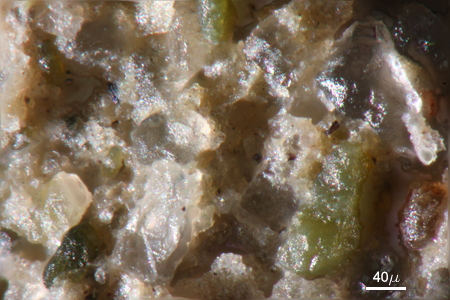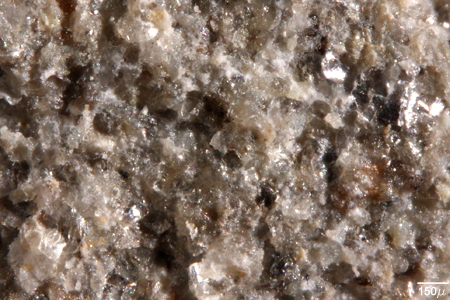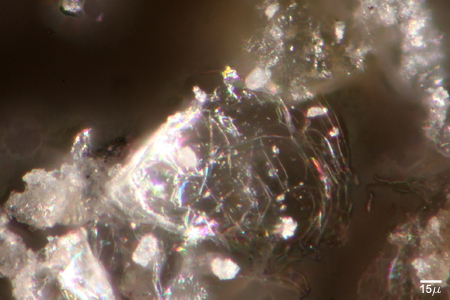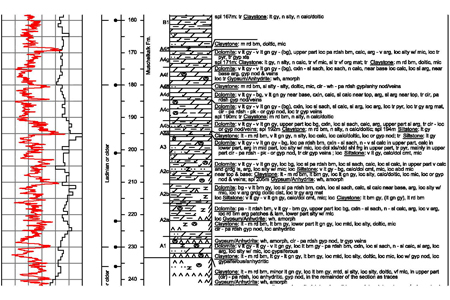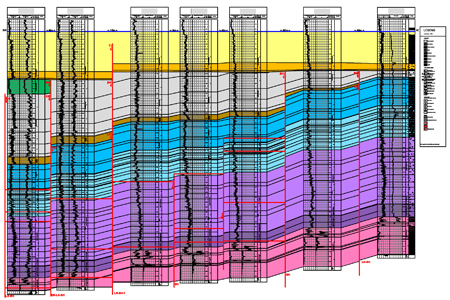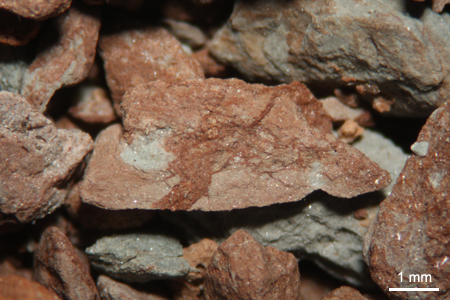We use traditional optical microscopy to solve doubtful stratigraphies and enhance correlations. Over time, most of the geological descriptions used for studies have been taken from the original mud log. These descriptions are made prior to the wireline logs and for operational purposes only, so are mainly focused on ‘change’ and not on accurate and consistent descriptions.
(Re)-study of drill cuttings in relation to the wireline logs by our experienced geologist will reveal important details previously overlooked and will result in meaningful stratigraphic units and boundaries, that will enhance correlation with other wells.
For our 4D geological reconstructions we firstly describe the stratigraphy in as much detail as possible; secondly we recognise faults in well trajectories and allocate them to tectonic phases. Lastly, we built a model and construct correlation panels to explain this model at different time levels. These reconstructions will give you a time slice view of the subsurface which matches the reality at the time as closely as possible. This expertise is used by companies and government parties who lack in-house capacity, but also for non-reservoir sections or abandonment preparation.
In this context our services include
— processing and study of drill cuttings samples, core samples and side wall samples
— recognition and distribution of minerals that influence wireline log measurements and petrophysical calculations, e.g. glauconite or mica
— identification of petrophysical features, e.g. explanation of ‘strange’ peaks
— hidden lithologies behind poor quality Gamma Ray through casing
— detailed graphic representation related to the wireline logs
— correlation between wells
— recognition of faults and tectonic history
